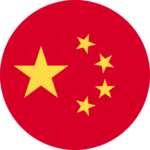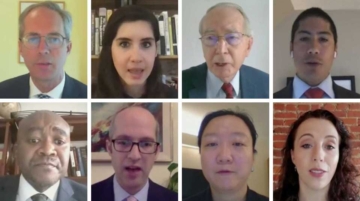
By Lukas Fiala
On Wednesday, it was reported that China donated four Type PMR-50 UAVs to Benin. Produced by China’s state-owned defense major NORINCO, the PMR-50 is a small, close-range drone and will reportedly support Benin’s counterterrorism efforts, likely by enhancing surveillance and reconnaissance capabilities.
Admittedly, it would be difficult to sell the transfer of four PMR-50s as a headline-worthy event. Yet, in the context of the DRC’s recent decision to procure China’s CH-4 combat UAVs, it’s worth taking a closer look at how quickly China has become a leading supplier of relatively advanced unmanned military equipment across Asia, the Middle East and Africa.
Following the Stockholm International Peace Research Institute’s arms transfers database, Chinese exporters have received orders for at least 388 military-grade UAVs between 2010 to 2020, of which over 280 have been delivered. Recipients include close partners of China such as Pakistan, but also countries further afield, including Saudi Arabia, the UAE, Egypt, Algeria and Nigeria.
China has been able to take the global market for combat UAVs by storm because of a decades-long and strategic effort to develop a domestic UAV industrial base. From private companies such as DJI – which holds a dominant market share in the commercial drone segment – to defense firms such as AVIC, CASC and NORINCO, China has built an internationally competitive drone industry.
And these efforts have not gone without notice in Africa and the Middle East. In many ways, UAVs not only represent a source of affordable airpower for cash-strapped militaries and governments in the developing world, they have also become a symbol of military modernity and captured governmental and popular imaginations of the future of warfare.
In Africa, Beijing is aware of this appeal and has ‘matched words with drones.’ After formalizing security and defense cooperation through the Forum of China-Africa relations, China has emerged as an important provider of military equipment as well as a source of capacity building in security sectors for many African countries.
And while Russia has recently overtaken China as the top arms exporter to sub-Saharan Africa – likely due to Moscow’s inroads into the Sahel through the notorious Wagner Group – China remains a partner for several governments across the continent. This was last seen in the trilateral military exercise between China, Russia and South Africa in February.
Most importantly, however, the proliferation of military UAVs is directly linked to human rights and security concerns. Chinese UAVs have reportedly surfaced in conflicts across Africa, including in Libya, Nigeria and Ethiopia, often due to post-shipment transfers by extra-regional governments.
While the transfer of combat drones is technically regulated by the Missile Technology Control Regime and thus subject to a strong presumption of denial, Beijing is not a party and has – despite assertions to the contrary – exported UAVs with insufficient post-shipment monitoring. While China’s latest export control regime aims to improve upon institutional and procedural aspects in this regard, credible enforcement is still an issue.
China is of course not the only player. The need for an inclusive and far-sighted multilateral solution to the proliferation of unmanned systems is becoming even more urgent as more and more countries are entering the military drone market. Turkey’s well-known Baykar Defense TB-2 UAV, for instance, has increasingly competed with Chinese counterparts for market share across Africa.
Yet, in a world of fractured multilateralism, great power competition, and zero-sum thinking on both sides of the aisle, it seems that an effective, inclusive and sustainable effort to curb UAV proliferation is more wishful thinking than reality.
Lukas Fiala is the project coordinator for the China Foresight initiative at LSE IDEAS.










